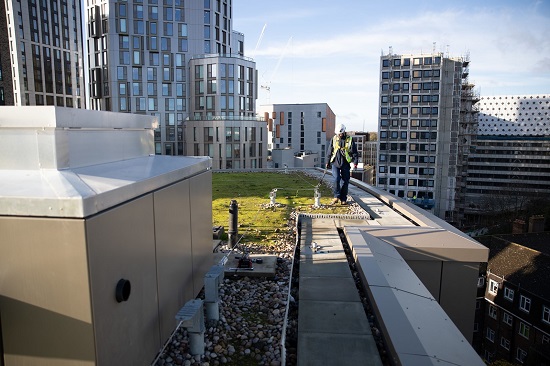 Wednesday, May 8, 2024
Wednesday, May 8, 2024  Wednesday, May 8, 2024
Wednesday, May 8, 2024 
When facility safety managers need to decide upon rooftop fall protection, they can take a tip from journalists: “Who, What, When, Where, and Why.”
Who, what, and when is anyone accessing the roof for maintenance, repairs, inspections, or other tasks. Why is clearly to protect workers and keep them safe. Where raises the question of the type of fall protection to use, travel restraint or collective?
A travel or fall restraint system is a form of Personal Protective Equipment (PPE) that limits where a person can go on the roof. Collective fall protection, such as a perimeter guardrail, is there to protect people working at heights without PPE. The limitations are within the confines of the safety railing system.
Wherever possible, a guardrail system is preferred because it is always in place to protect workers and requires no special training or upkeep. It is known as a “collective” system because several workers are protected at once when performing their tasks.
In constrained areas, on high-sloped roofs, or wherever else a collective system is not possible or practical, a travel restraint system should be used. A safe and proper system includes a Class A full body harness, a fixed-length or adjustable lanyard, a lifeline or rope, rope grab, and a sufficient anchor point.
Whether a collective or fall restraint system is employed, proper fall protection begins with understanding the distinctions between rooftop hazards. There are three zones of concern: access points, roof openings, obstacles, and unprotected edges.
Keep reading this article on KeeSafety.ca